|
|
Jersey Geology Trail |
Diorite. (Gk. diorizo=distinguish; lithos=stone). |
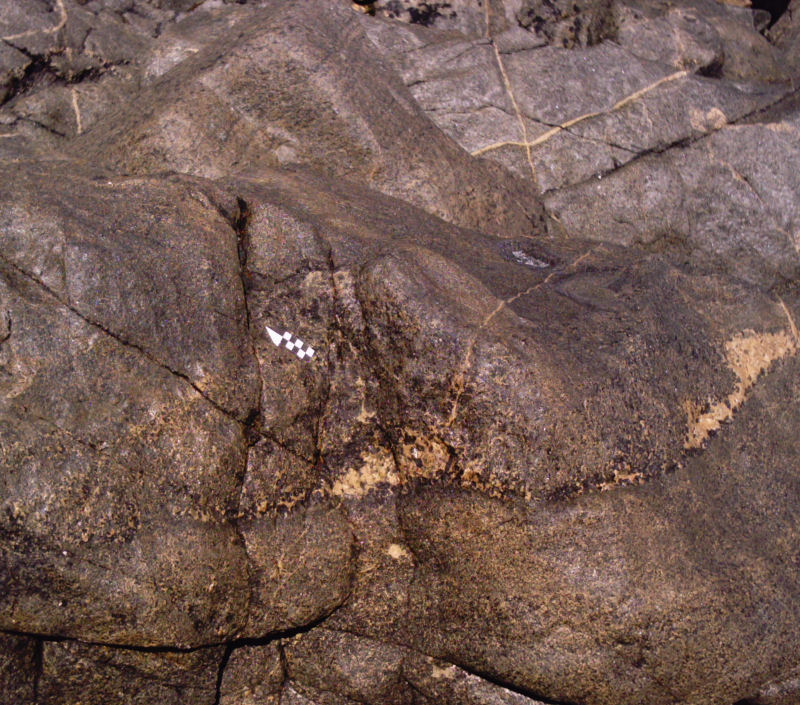 |
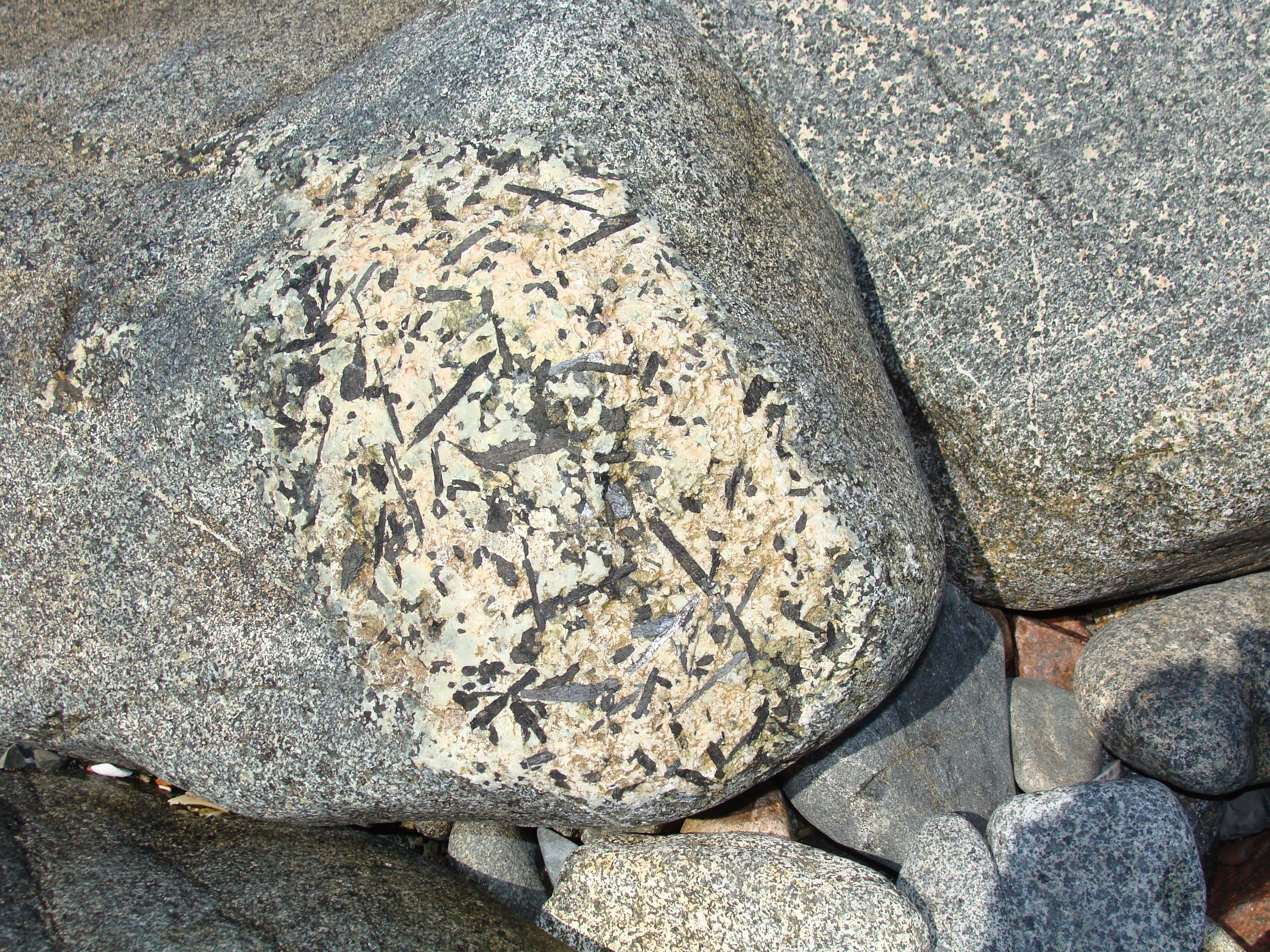 |
Diorite, dark & light, banded and segregated. |
Porphyritic (appinite) diorite; both at Le Nez. |
| |
Diorites are generally coarsely crystalline, intermediate plutonic igneous rocks, medium grey in colour with a speckled appearance produced by black hornblende and/or augite crystals and white to pale yellow plagioclase oligoclase or andesine feldspars. Quartz may form up to 10% of the crystalline mosaic (Allaby & Allaby, 1999. p. 160).
In Jersey, diorites crop out in two areas along with granites. They occur in the Northwest Granite Complex at Sorel Point and Ronez on the north coast in St. John and in the Southeast Granite Complex between granites on the south coast from St. Helier via La Motte (Green Island) and Le Hocq in St. Clément to Seymour Tower on the southeast wave-cut platform. In both places, the diorites are also associated with gabbros which together with the presence of the adjacent granites has led to questions about their genesis.
Do they a result from crystallisation of a dioritic magma, or from gabbros altered by the introduction of a granitic magma? The white crystals are plagioclase feldspars (oligocene-andesine) and the black ones are hornblende, often as excellent needles and columns with hexagonal cross sections. Quartz occurs as an accessory mineral and has produced quartz diorites in parts, while elsewhere, the greater abundance of the amphibole has produced hornblende diorites. At Le Nez Point, c. 200m east of La Motte slipway, the sequence is layered, and very dark grey, gabbroic-looking rocks alternate with the lighter dioritic-looking rocks. Veining by later intrusion is also beautifully exposed.
A clear distinction cannot be easily made between diorite and gabbro (Bishop & Key, 1983, p. 921 et seq.) but some of the diorites have relict textures and mineralogy indicative of gabbros. This field relationship may also be produced by crystallisation from a dioritic magma (Topley and Brown, 1984, p. 596). The problem is fully discussed by all the authors in this last article.
The field relations are beautifully exposed on the south coast around Seymour Tower and between Le Hocq westwards to Le Nez Point and La Motte (Green Island) beach area, and on the north coast at Sorel Point. Both sites are easily accessible, but the south coast permits easier walking and investigation.
Around Seymour Tower to the south west and north north west of it, the diorites occur in thicker layers and dip to the north east at c.35°, often broken and within later granite. |
| |
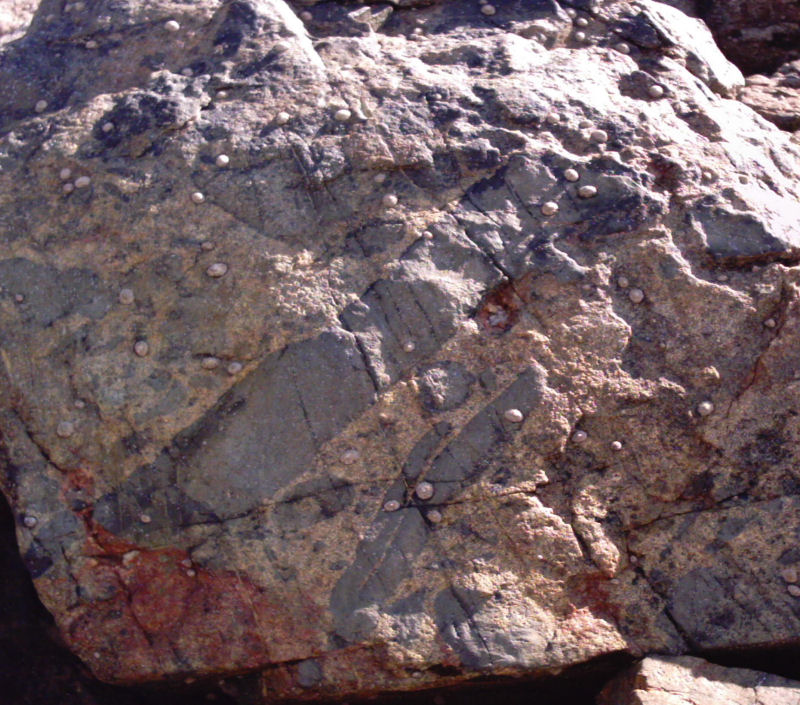 |
| |
They are very dark grey to black and are composed predominantly of hornblende, some with cores of clinopyroxene, and with minor plagioclase. The green colouration is due to alteration to chlorite and possibly epidote. The most noticeable structures here are the narrow pipes of orientated hornblende and plagioclase crossing from one layer to another (Bishop & Key, 1983, p.926) which are thought to be a form of diapiric structure from the light coloured diorite (leucodiorite) into the darker diorite (melodiorite).
Diorite/granite association.
From Le Hocq westwards, after crossing the granite outcrops off the slipway, the rocks change to dark grey-black and black and white speckled in colour. Some of the diorites appear brecciated or to contain xenoliths of gabbro where coarsely crystalline diorite veins have intruded them (see gabbro page). West again towards, La Grève d'Azette, Le Havre des Pas and the Elizabeth Castle outcrops, angular xenoliths of diorite in granite also occur, some of the rocks being named Agmatite (Bishop, 1955, p. 309), a type of migmatite where the intruding material forms a web of veins through the host rock (Whitten & Brooks, 1972, p.18). |
| |
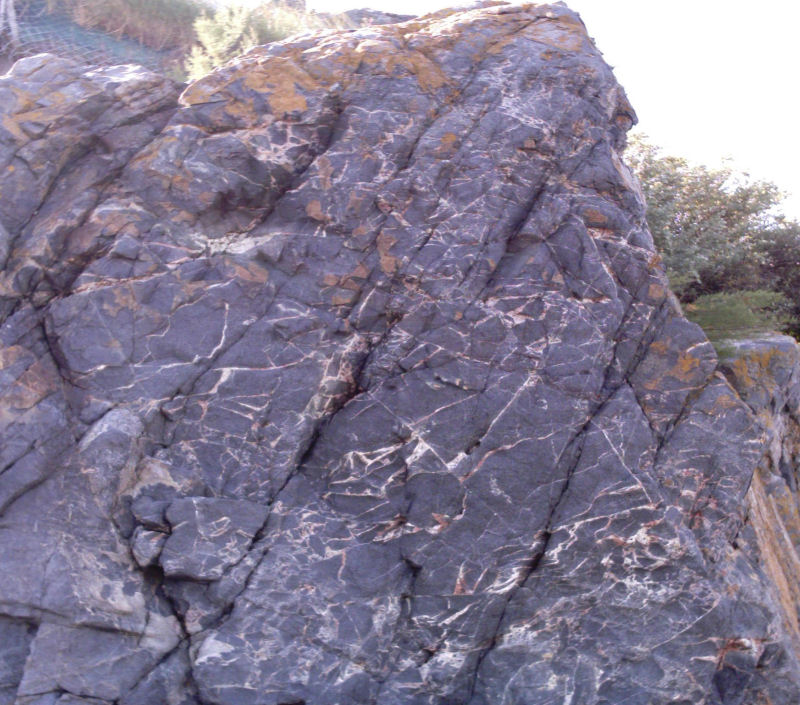 |
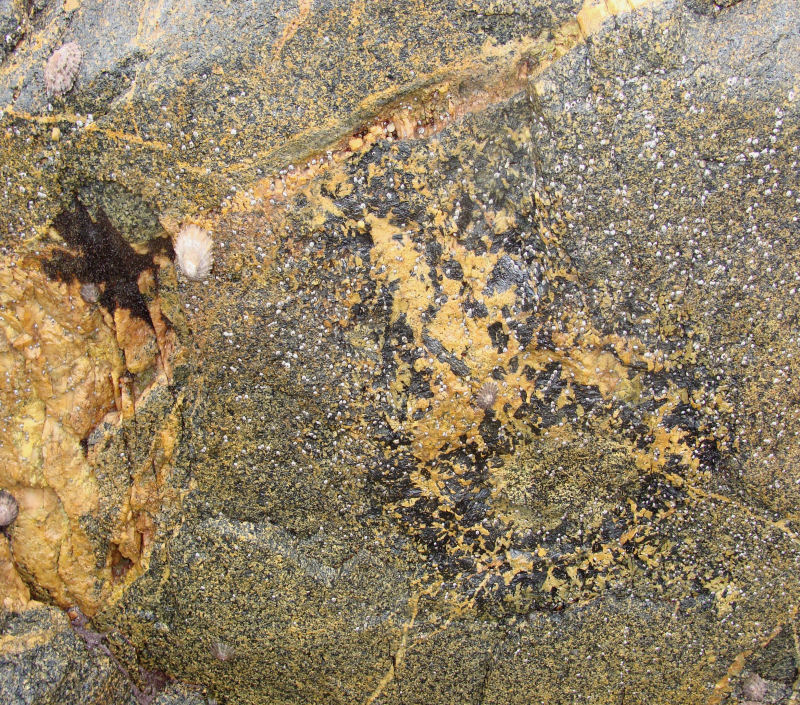 |
| |
In successive outcrops towards Rocque Berg and Le Nez Point (above left), similar to net-veining (Salmon, 1998, p. 510 - 515) and on the north side of La Motte (Gr. Is. above right), excellent examples of various different textures appear to illustrate mixing, stoping and segregation layering where yellow-brown and white feldspar and black hornblende and augite layers grade into blacker gabbroic-looking layers. Other textures may also signify mobilisation, stoping, mixing, and reaction during later intrusion of granitic magma.
Various structures and textures (below) showing alteration in the diorites at Le Nez and around the north shore of La Motte. |
| |
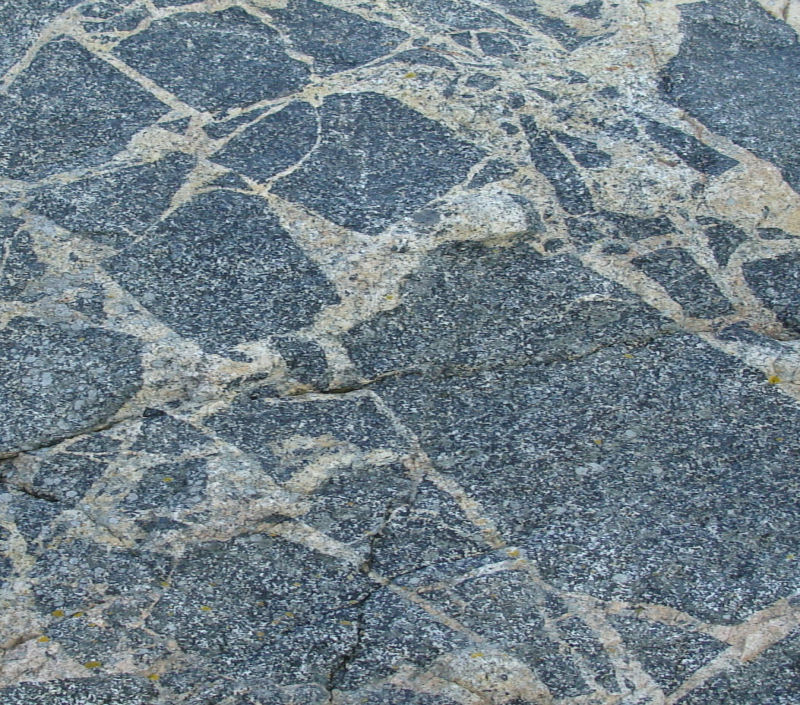 |
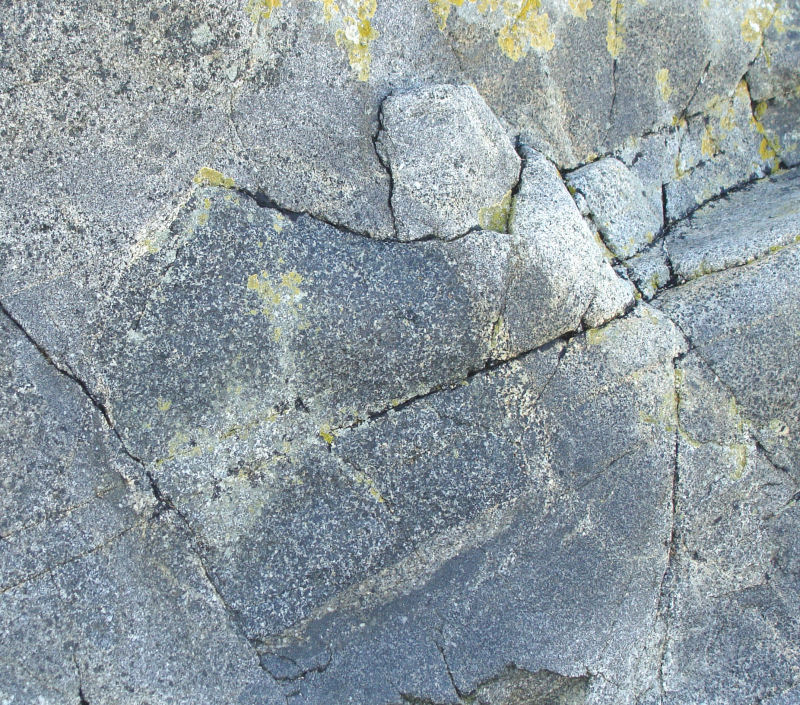 |
| |
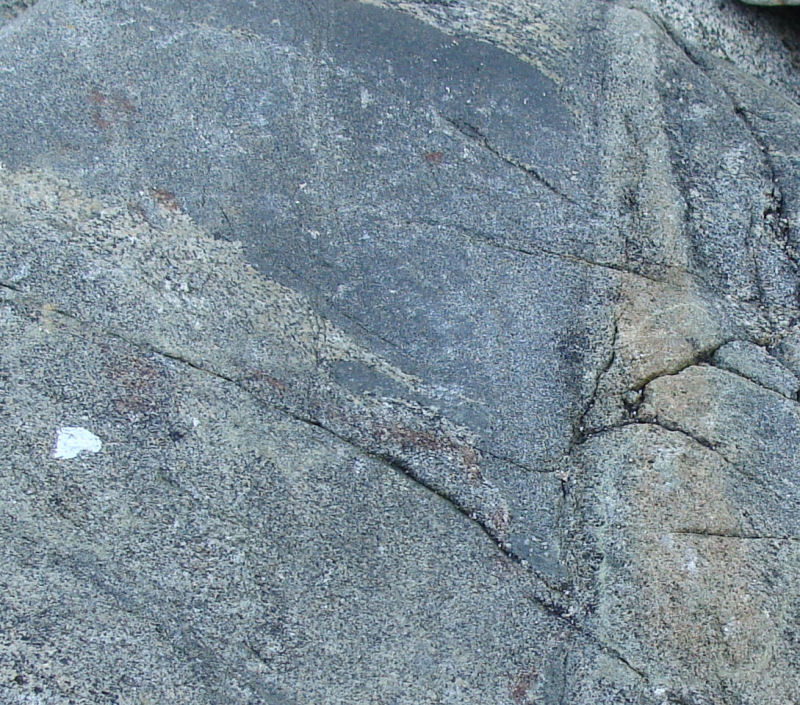 |
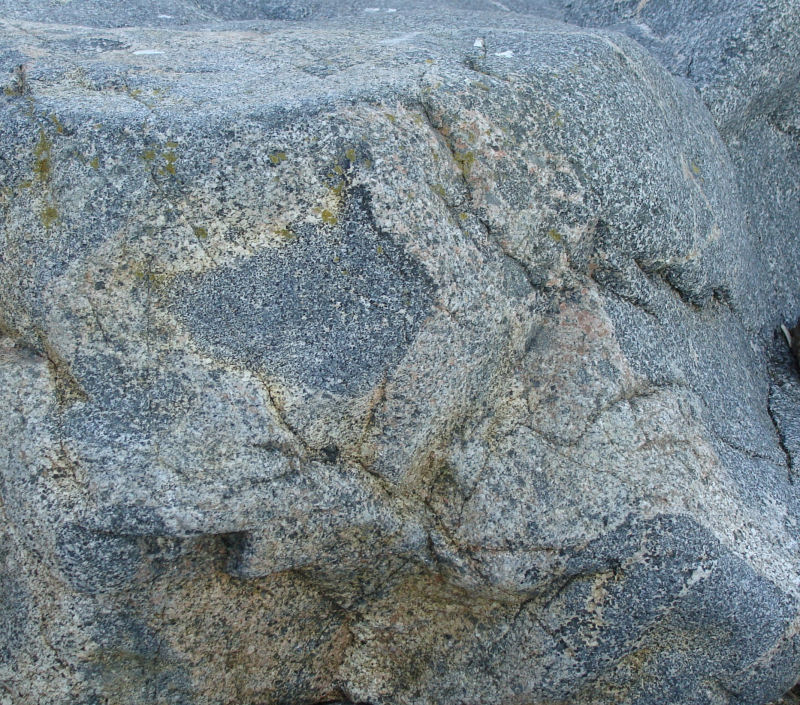 |
| |
In addition, several low reef outcrops, just NE of La Motte, show invasion of the diorites by the the western edge of the Le Hocq-La Rocque, which has produced striking structures. |
| |
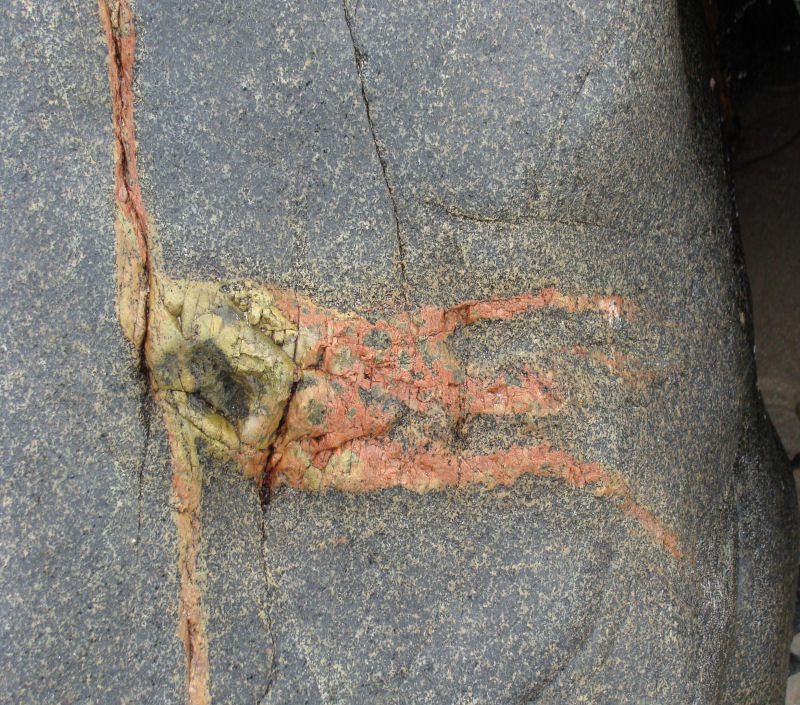 |
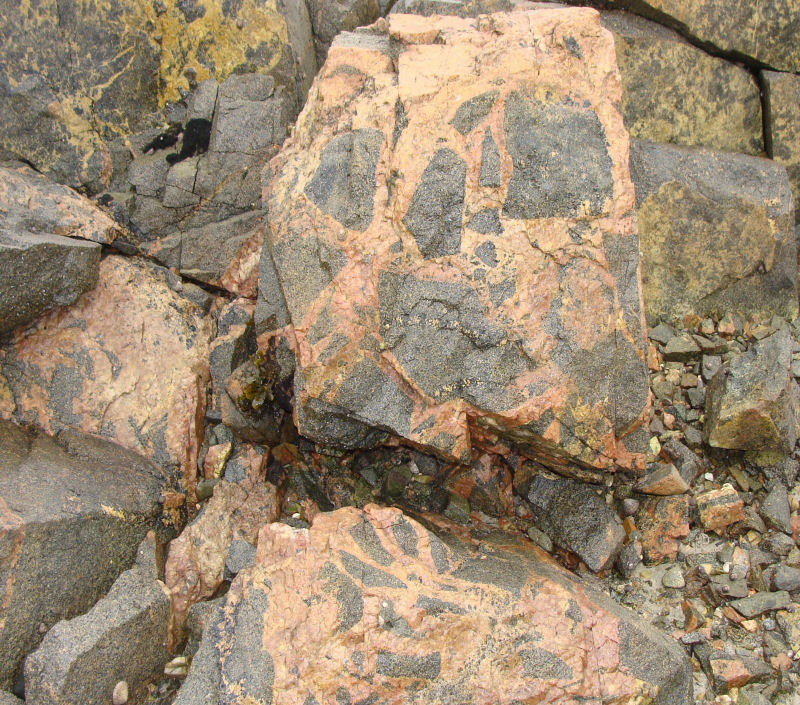 |
| |
Appinites, light coloured pegmatite-like diorites with numerous, large prismatic hornblende crystals and feldspar laths are notable at Le Nez Point, as are small, web-like areas of quartz and feldspar veins around darker, mafic-rich patches which may indicate stoping (see top left above).
Outcrops comprising layers of different thickness and repeated layering are also very evident (see top first photograph). These have been described in detail by Bishop & Key (1983, p. 923) and Bishop, Keen, Salmon & Renouf (2003, p.16).
On Sorel Point, alongside the path to the Signal Light, low outcrops reveal granodiorite veins in the diorite and some unusual onion type weathering. |
| |
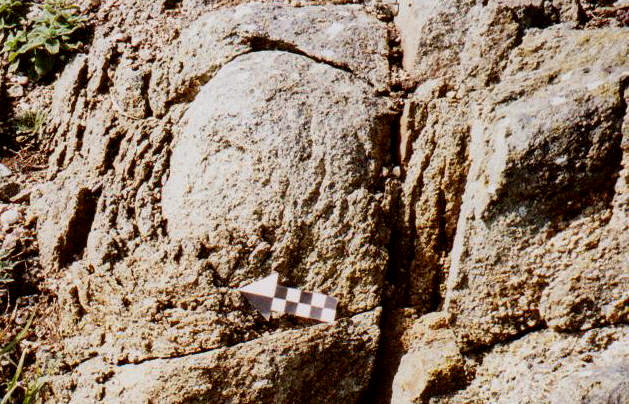 |
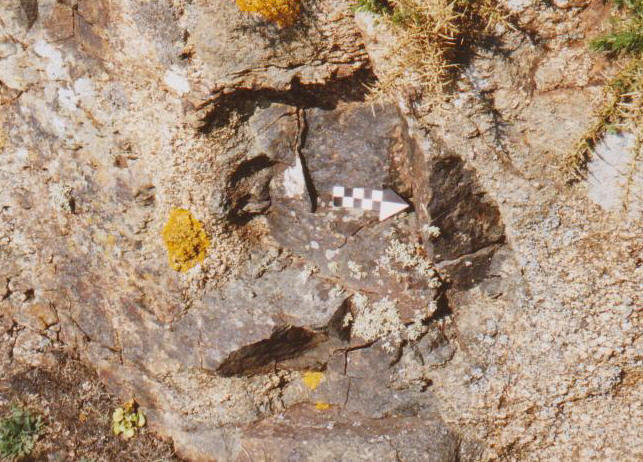 |
Sorel Point. Onion weathering in granodiorite. |
Diorite (centre) within granodiorite. |
| |
From here, an excellent traverse takes one down the Point where the diorite outcrops and junctions with the NW granite are well exposed and well defined, curved and irregular, implying a later separate intrusive period or phase. They contain clearly visible black hornblende and white plagioclase feldspar crystals. They alternate with outcrops of grey, coarse crystalline granodiorite and dark grey-black, medium to coarse crystalline gabbro and pink granite. The diorites near the top of the path on the low crags on the western side contain whiter patches of coarser feldspar, quartz and rare hornblende and look like filled druses but they do not have the crystalline texture perpendicular to a well defined wall. They may represent areas of slower cooling within the diorite and are the ocelli within this sequence fully described by Bishop, Keen, Salmon and Renouf (2003, p.36).
The arguments with reference to the origin of the diorites in the SE granite pertain here and instead of being produced from gabbros by granitic magma metasomatism, they are now thought to result from intrusion by a coexisting dioritic magma. Salmon (1998) demonstrated that were four separate intrusive periods each rock having cooled before the next was intruded. |
| |
|
References.
Allaby, A. & Allaby, M. 1999, A Dictionary of Earth Sciences. Oxford University Press.
Bishop, A. C. 1955. Features of some dioritic xenoliths from Jersey, Channel Islands, and their bearing on the granite problem. Bull. ann. Soc. Jersiaise, Vol. 16. Pt. 3, p. 309.
Bishop, A. C. & Bisson, G. 1989. Classical areas of British geology: Jersey: description of 1;25,000 Channel Islands. Sheet 2. (London: HMSO for British Geological Survey).
Bishop, A. C., Keen, D. H., Salmon, S. & Renouf, J. T. 2003. The Geology of Jersey, Channel Islands. Geologists' Association Guide No. 41.
Bishop, A. C., & Key, C. H. 1983. Nature and origin of layering in the diorites of SE Jersey, Channel Islands. J. Geol. Soc. London, Vol. 140. pp. 921 - 937.
Nichols, R. A. H. & Hill, A. E. 2004. Jersey Geology Trail. Private Publication printed by the Charlesworth Group.
Salmon, S. 1998. The plutonic igneous complex at Sorel Point, Jersey, Channel Islands: a high - level, multi - magma assemblage. Geological Journal. Vol. 33. pp. 17 - 35.
Topley, C. G., & Brown, M. 1984. Discussion on the nature and origin of layering in the diorites of SE Jersey, Channel Islands. J. Geol. Soc. London, Vol. 141. pp. 595 - 598. |
| |
| |
| |
|